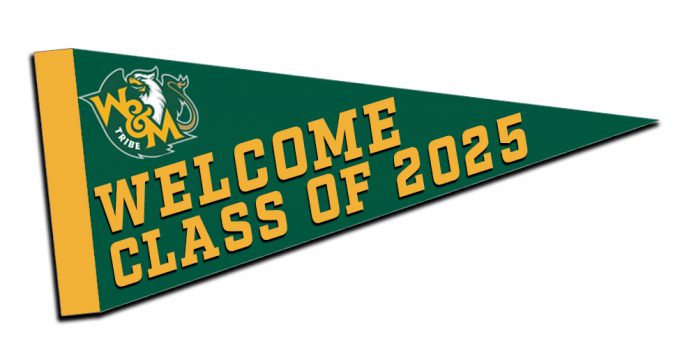In the second year of the COVID-19 pandemic, the Class of 2025 will be the College of William and Mary’s second class to begin freshman year under unusual circumstances. While the College has lifted some safety measures, such as outdoor masking and virtual classes, this year’s incoming class will undoubtedly encounter a different campus than pre-pandemic ones did.
When the Class of 2025 arrives on campus, they will have already achieved some firsts. For the first time, prospective students took virtual tours of the campus and sat for virtual interviews. Furthermore, this year’s applicant pool was the largest in the College’s history — roughly 17,400 high school students applied for approximately 1,690 spots in the Class of 2025. That number is up 23% from last year’s 14,200, and this year is the first time the College has received over 15,000 applications. Two-hundred transfer students will also join the College’s community this year.
The admit rate for incoming freshmen was 37%, which is lower than last year’s 42%.
“COVID-19 forced Undergraduate Admission to completely reimagine its outreach, communications and recruitment efforts,” College spokesperson Suzanne Clavet said in a Jan. 27 press release.
Among those who applied to the College, there were more first-generation college students and students of color. Applications from those demographics increased 20% for the Class of 2025 and students of color makeup 33% of the Class of 2025. First-generation students comprise 11% of the freshman class. There was a 25% increase in enrolling freshmen who are Pell Grant eligible.
International students will make up 4% of the freshman class.
Dean of Admissions Tim Wolfe spoke to the College’s recruiting efforts, specifically aimed at enrolling more students from historically excluded backgrounds. Among those initiatives include fee waivers for first-generation and Pell Grant-eligible students and a partnership with the Posse Foundation.
“This year also marked the first year of our new partnership with the Posse Foundation resulting in the first W&M Posse Scholar cohort this fall,” Wolfe wrote in an email. “We are excited to welcome this diverse group of scholars and leaders to campus, and know they will make a positive impact on W&M.”
The College also offered a test-optional application process for the first time this year, largely in response to the logistical and financial challenges many students faced during the pandemic. 39% of enrolling students chose the test-optional path.
Of students who chose to submit test scores, the middle 50th percentile for the SAT was 1350-1520. Likewise, the middle 50th percentile for ACT scores was 31-34. The average weighted high school GPA was 4.3.
“Fortunately, this had been a move we’d started to research and consider even before the pandemic — which made it easier to quickly announce and implement that change,” Wolfe wrote. “Additionally, since our admission review process was already a comprehensive, holistic review process involving multiple components, we had plenty of other factors — including academic, extra-curricular and personal experiences — that we could use to make admission decisions. In the end, almost 40% of the incoming class applied through the test-optional process.”
Senior Associate Dean of Admission David Trott detailed the obstacles that the Office of Undergraduate Admission faced in recruiting students virtually and giving them an authentic experience at the College without stepping foot on campus. Trott said admissions was able to reach even more students who would not have normally been able to travel to Williamsburg.
“The pandemic certainly created a unique set of circumstances for the members of the Class of 2025 to begin their time at the university, starting with the admissions process,” Trott wrote in an email. “Due to COVID-19, we had to change the way we connected with prospective students. While we were unable to do in-person visits, we found new ways to reach out, through such things as virtual tours and online events. Our virtual offerings allowed us to not only reach students we may not have been able to previously, but it allowed prospective students who may not have been able to travel to campus to participate in W&M programs that, in years past, were only hosted in-person. Our staff is looking forward to finally meeting some of these students — whom we now know so well — in person soon as they join us on campus.”
Despite the challenges, Wolfe emphasized the College’s success in recruiting new students.
“In the midst of a global pandemic, and at a time when many institutions have struggled with enrollment, William & Mary was able to enroll a record-breaking class and stay on track with meeting the university’s enrollment-growth goals,” Wolfe wrote. “It is clear that prospective students continue to be drawn to the William & Mary experience and community.”
And even if the Class of 2025 is entering during an uncertain time, Trott said the College’s sense of belonging for new students will persist.
“The sense of community at W&M is something that is truly special, but it is only possible through the commitment of our members to upholding our values of belonging and respect,” Trott wrote. “To our new students, you are already members of this great community and always will be. Nothing else is required for membership, but I hope you will always strive to find ways to connect with one another, to find support in each other when needed and to offer support when given the opportunity.”

